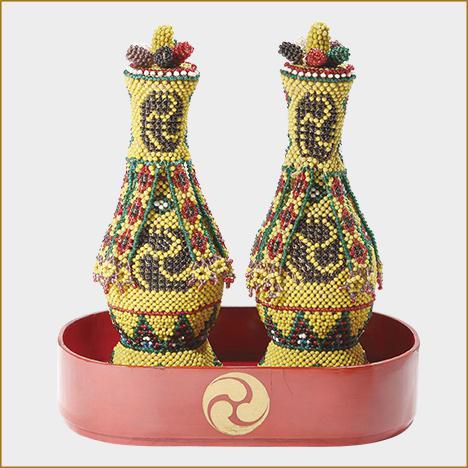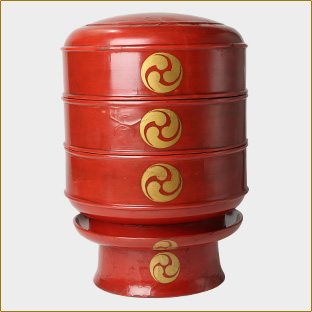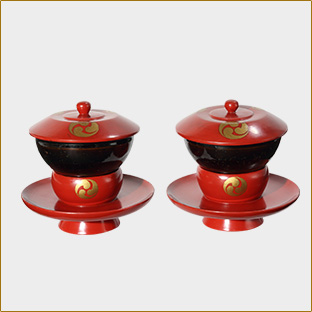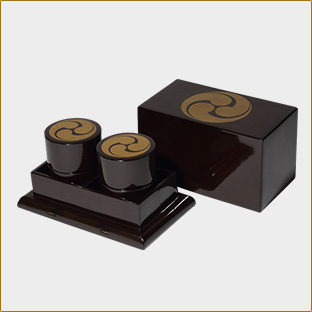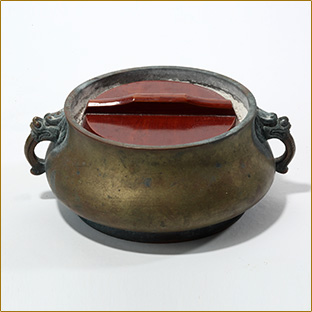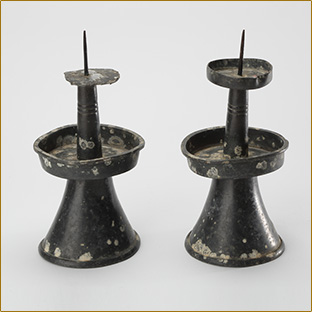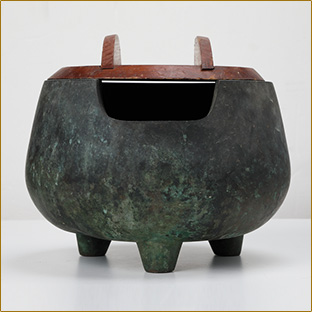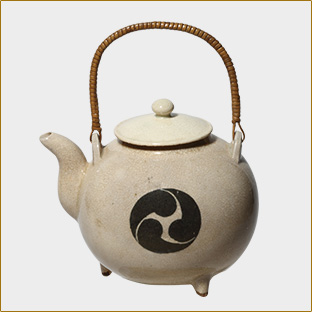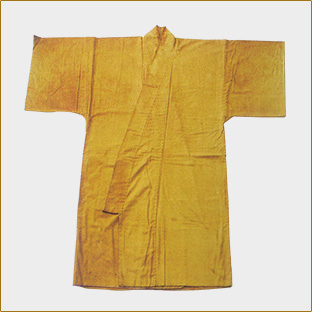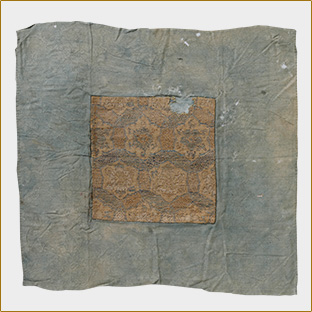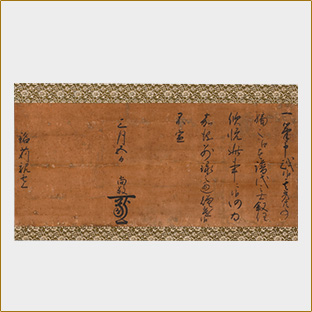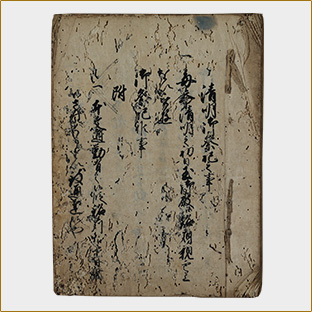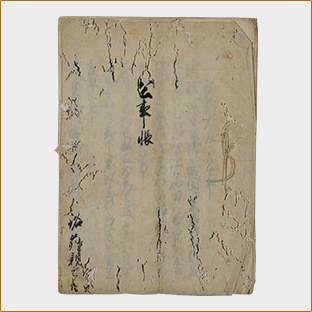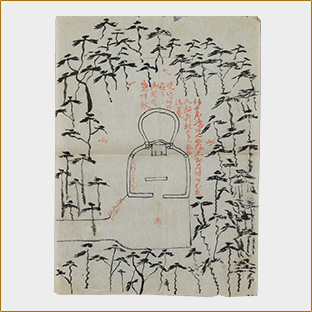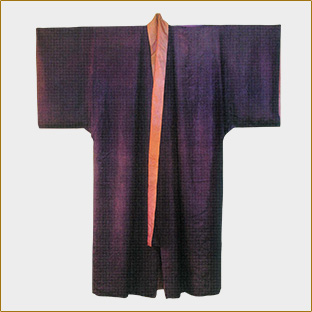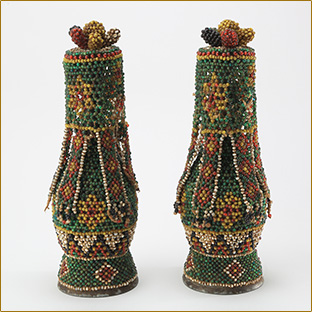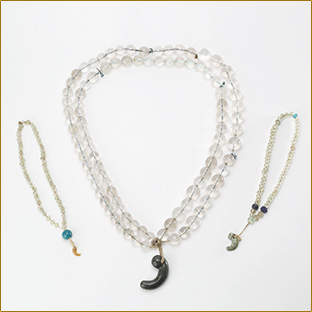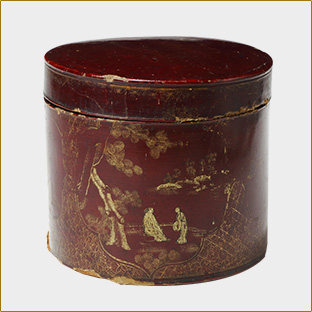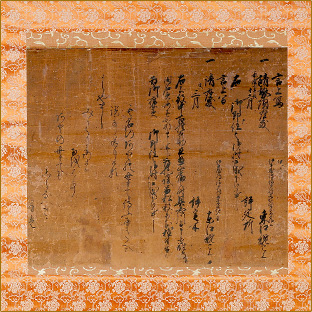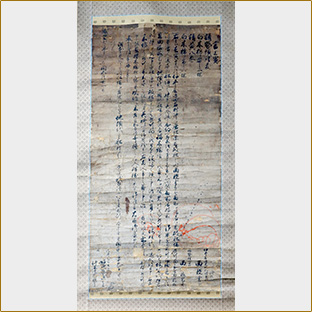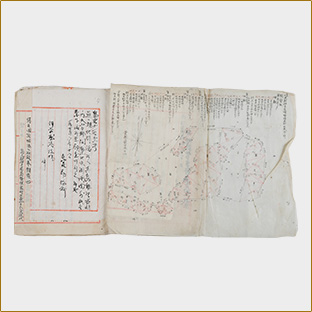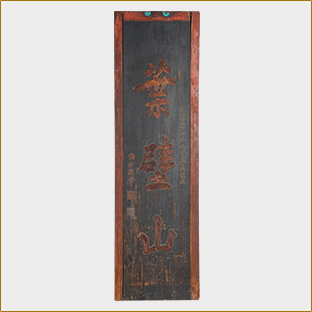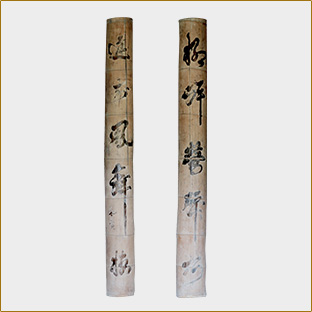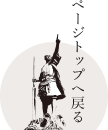The Bloodline of Sho En
View various treasures reflecting a connection with the royal line
Village Designated Historic Site / Place of Scenic Beauty
Samuree Michi
Samuree Michi is an old road roughly 2km in total length linking the Mekaru Residence in the town of Izena to Tamaudun, and was once also the road used by participants in the Kuujinu Shiimii as they headed towards the Tamaudun. "Samuree" means "Samurai," so in other words, a warrior.
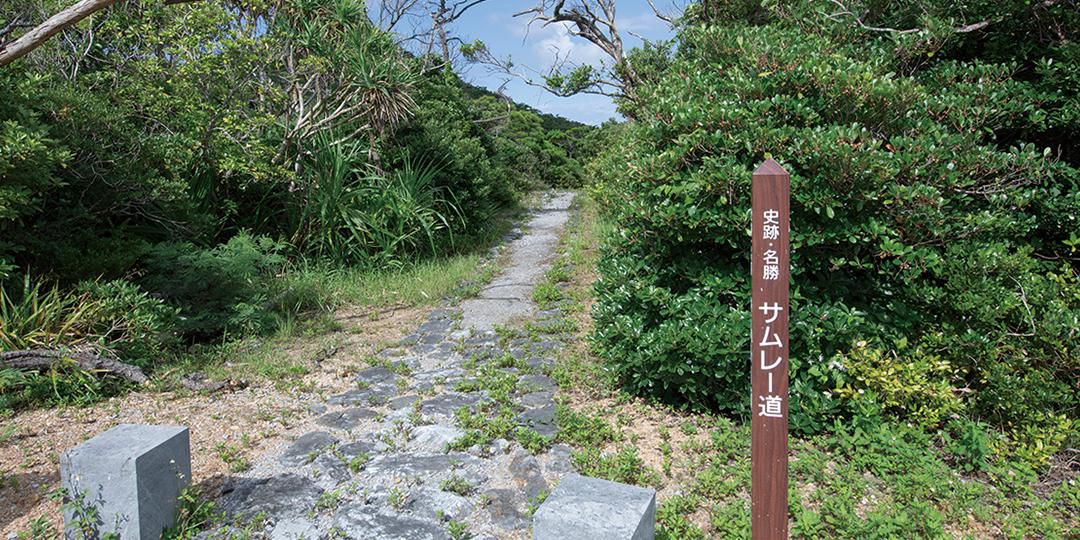
Kuujinu Shiimii
In Okinawa, in the third month of the old lunar calendar, it is typical for an event called Shiimii to be held, where family members and other members of the family clan gather at ancestral graves to pay their respects with offerings of alcohol and food, and share a meal together. The Kuujinu Shiimii, which started in 1870, is accepted to be the only Shiimii with a connection to royalty that takes place in an area other than Shuri.
The ceremony is held at Tamaudun. The participants number around 40--50 people, and are relevant members of what are called the Yutunuchi, which comprise the families of Mekaru, Naka, Irei, and Tamagusuku, which have an association with the royal family, as well as representatives of the administration, including the mayor of Izena Village.
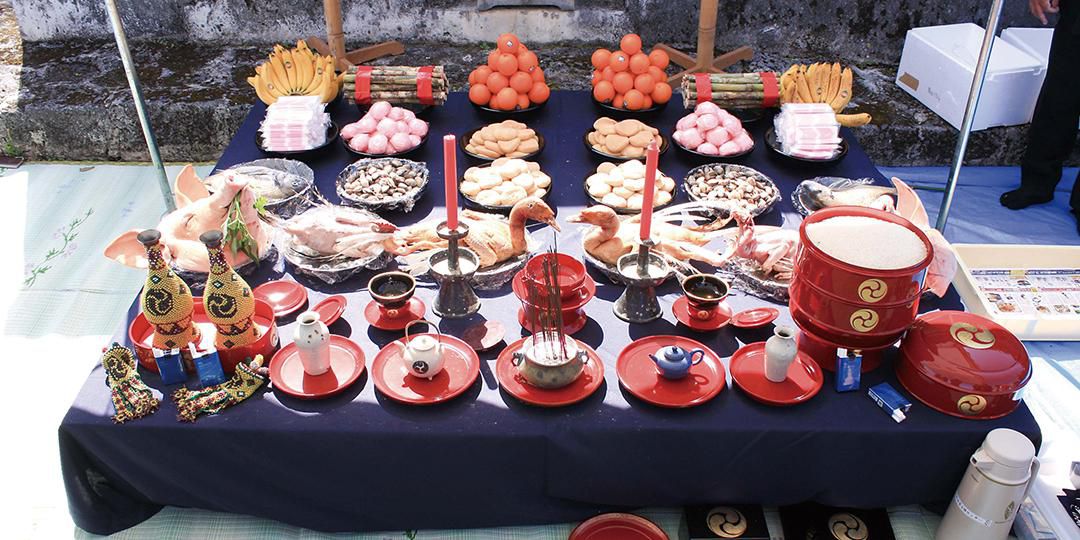
Offerings of alcohol and food are made on the day, and the participants burn incense. Next come four bows, involving a sitting action with hands held together repeated four times. Then tea and sacred wine are poured, and all of the participants bow after burning ritual paper money. Depending on the year, dancing, singing, and Sanshin performances follow, with everybody sharing a banquet at the very end.
Village Designated Tangible Cultural Property (Ancient Document / Handicraft)
Mekaru Family Items
Sho En was born the child of farmers, and after various trials and tribulations, rose to become the Ryukyu King. The Mekaru family was originally that of Sho En's uncle, and once Sho En had become the first king of the Second Sho Dynasty, he gave the family a variety of special privileges, including favorable treatment such as making them administrators for the region. This close connection between the royal family and the Mekaru family continued from the second generation onwards, with many items of what should also be described as treasures being sent from the royal government at Shuri to the Mekaru family. Included among these valuable gifts were ancient documents and artistic handicrafts which were later donated to Izena Village and can still be seen to this day. These items have great historical and artistic value, and are definitely worth a look.
Village Designated Tangible Cultural Property (Handicraft)
Items Given to Iheya no Amuganashi
The Naka family, which is one of the Yutunchi families, was a family that Sho En's elder sister, Masenikane, married into. Having ascended to the throne, Sho En conferred the position of Iheya no Amuganashi upon the Naka family. This was one of the high-ranking priestesses called the Sanjuusankun, a special being who would travel to Shuri castle every two years to attend the New Year's ceremonies. The daughters of the Naka family have served as these priestesses for generations. Given that lineage, the family has received and retains many gifts from the Shuri royal government, 15 artistic handicrafts of which were designated by the village in 1977 as tangible cultural properties, as "Items Given to Iheya no Amuganashi."
Village Designated Tangible Cultural Property (Handicraft)
Items Given to Nishi no Futakayada Amu (Irei Family)
After the enthronement of King Sho En, his aunt was given the position of a priestess called Futakayada no Amu. After her death, her two daughters inherited the role, and so there were two Futakayada no Amu - Nishi and Hae. The younger daughter was called Nishi no Futakayada no Amu, and women in the Irei family have inherited that position for generations, while the older daughter became Hae no Futakayada no Amu. From travel by the two Futakayada no Amu to Shuri Castle to make reports and their seating positions at religious services, they are judged to be companions to Amuganashi.
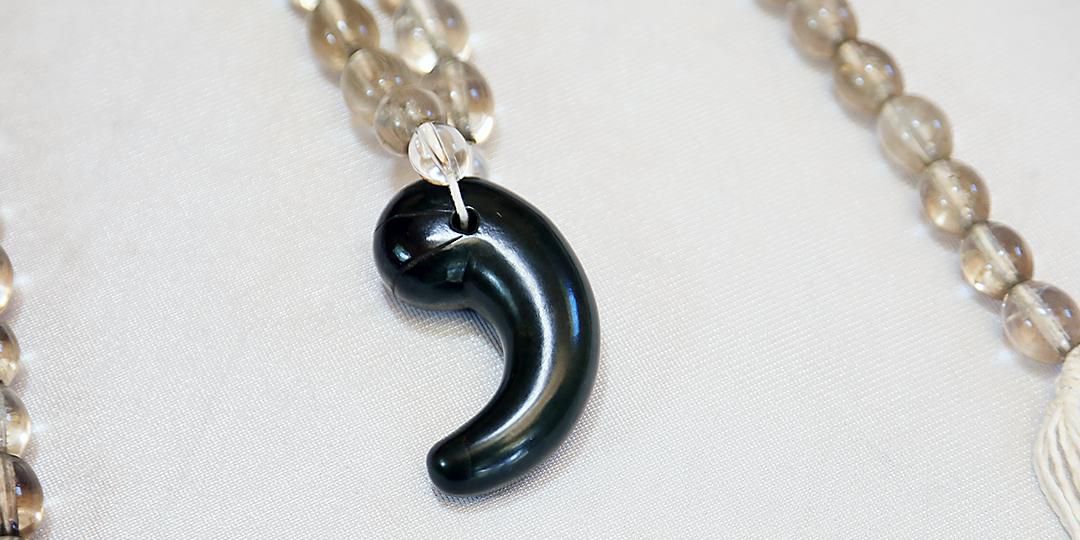
Nishi no Futakayada no Amu was also given religious items such as Magatama and their round container and clothing by the Shuri royal government, and despite age, loss, and damage taking their toll, some are still in the custody of the Irei family.
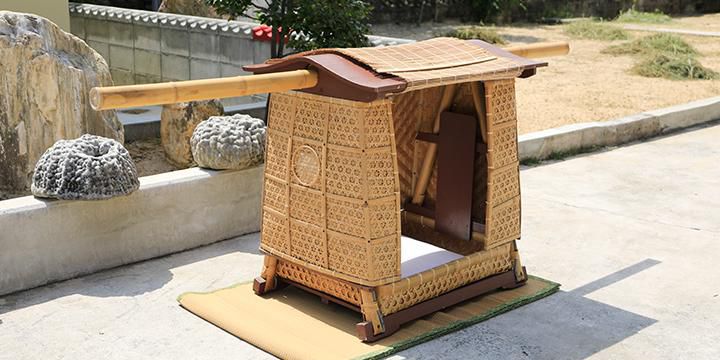
Village Designated Tangible Cultural Property (Handicraft)
Items Given to Hae no Futakayada Amu (Tamaki Family)
King Sho En's aunt became Futakayada no Amu, and her two daughters (seen from Sho En's position) inherited those roles as Nishi and Hae. The Tamaki family have inherited and fulfilled the priestess role of Hae no Futakayada no Amu for generations. Just as in the Irei family with Nishi, the Tamaki family is in possession of items it has received, including religious items and clothing. The first Futakayada no Amu received a palanquin from King Sho En, and this was apparently used in rituals such as the Kujinu Shiimii. The Tamaki family and Irei family also had an artisan make new palanquins for each, in which the Hae and Nishi Futakayada no Amu would ride when departing for rituals and festivals, carried by young members of their families.
Village Designated Tangible Cultural Property (Ancient Document)
Ancient Document
There are not many documents remaining that depict the true state of affairs in the age of the Ryukyu Kingdom. Damage from natural disasters exemplified by typhoons and the fierce and repeated land battles of the Battle of Okinawa are considered to be the main causes of their vanishing. However, some cases can be seen where quite sizeable amounts of document materials have been left on outlying islands that were not caught up in the land battles. Izena Island is one such case, and many books or ancient documents have been passed down, especially in the Mekaru family, whose members had the role of village headman. Many of them describe the relationship with the Shuri royal government, and are valuable historical documents that offer a glimpse of the position of the Mekaru family and Izena Island in the age of the Ryukyu Kingdom.


